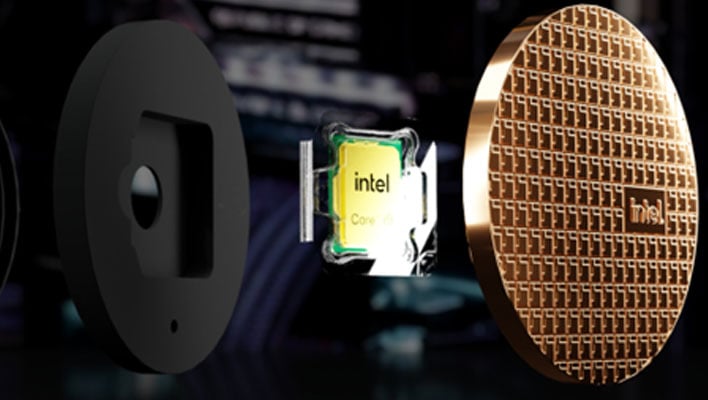Intel Core i9-13900K Raptor Lake CPU Might Turbo To 5.8GHz And Flex 68MB Of Game Cache

I distinctly remember when AMD and Intel were racing to 1GHz (yes, I'm old), and in the years to follow, they both continued to push for higher clocks. The focus would later shift to things like multi-core designs, better branch prediction, and more recently piling on as much cache as possible, but chasing higher clocks hasn't been completely abandoned. Intel recently reached new heights with its Core i9-12900KS Special Edition SKU, and rumor has its next-gen Core i9-13900K will clock even higher.
Before we get to Intel's 13th Gen part, let's talk about its current flagship silicon in the consumer space. The Core i9-12900KS wields eight Performance cores with Hyper Threading support and eight Efficiency cores, making it a 16-core/24-thread CPU. Those P-cores can hit a top clock of 5.5GHz across one or two cores at a time via Thermal Velocity Boost (VLB).
This is the foundation for Intel's claim to having launched the "world's fastest desktop processor." As we saw in our AMD Ryzen 7 5800X3D review that went live today, AMD's strategy of stacking 3D V-cache results in a faster gaming chip overall. Quantifying what's truly fastest is a more nuanced discussion, but in terms of raw clock speed, Intel has the bragging rights at the moment. And probably next round, too.
According to Twitter leaker Raichu, the top Raptor Lake will sport an even higher clock than the Core i9-12900KS. Up to 300MHz more, which would put the Core i9-13900K or 13900KS at 5.8GHz. At that point, any overclocking headroom that might exist would creep into 6GHz territory.
The clock speed gain bump would also increase performance, obviously, but to what extent remains to be seen. Remember that in addition to running faster (per the rumor), Raptor Lake should bring with it the usual gains we typically see from architectural upgrades and optimizations.
Raptor Lake will also double the number of E-cores to 16, while the P-core count will stay the same at up to eight. More interesting, though, is the rumor that it could be jam packed with up to 68MB L2+L3 cache. We wrote about this a few months ago, but what the cache arrangement boils down to is a 60% increase in L2 cache for the P-cores and double the L2 cache for the E-core clusters. The total amount of L3 cache, meanwhile, would increase to 36MB.
So if all this is true, Raptor Lake in addition to bringing an upgraded architecture and optimizations to the fold, will also feature a faster top clock and increase the L2+L3 cache bucket from 44MB to 68MB. That will make things interesting in what will be a showdown with Zen 4 later this year.


